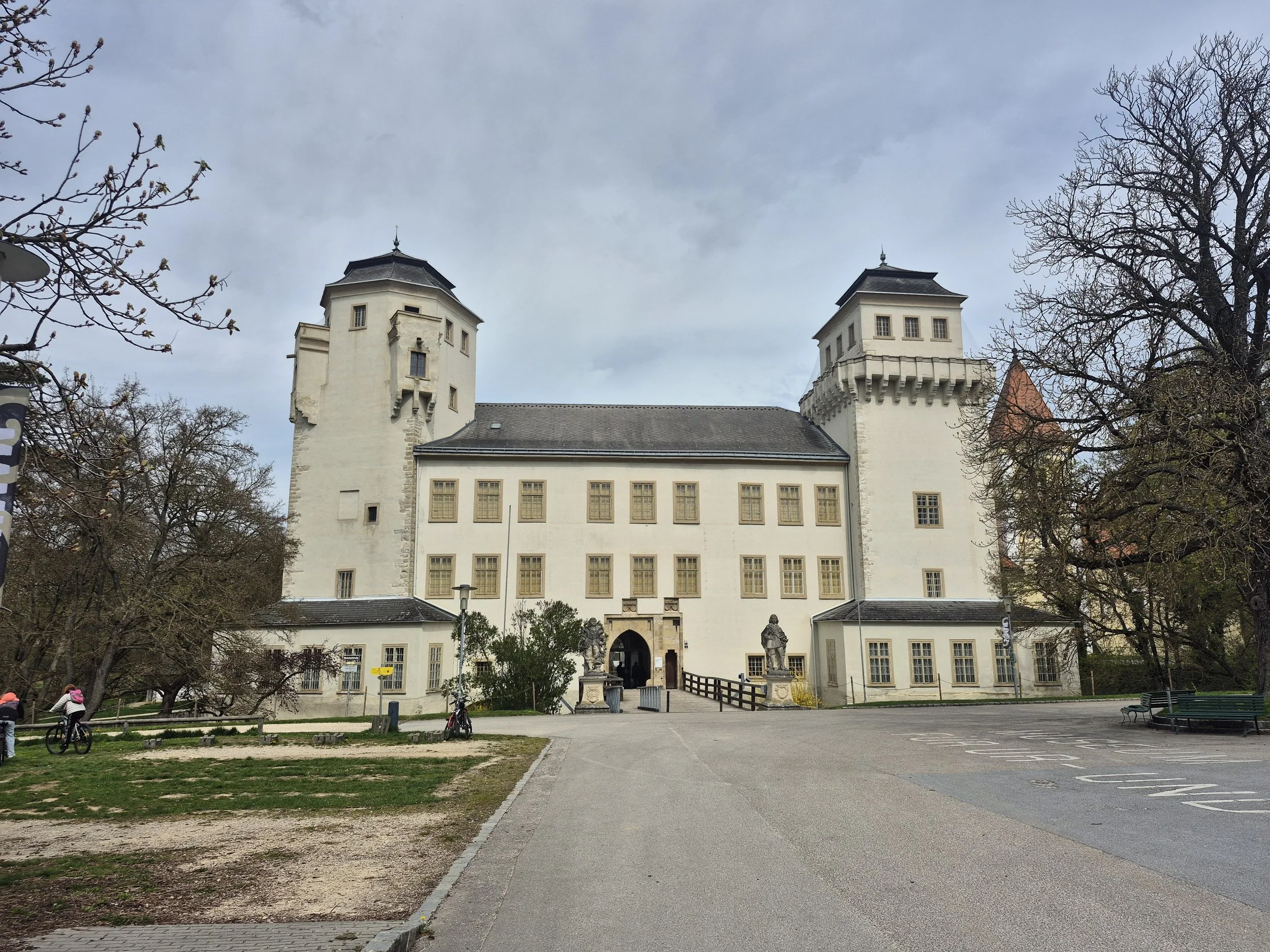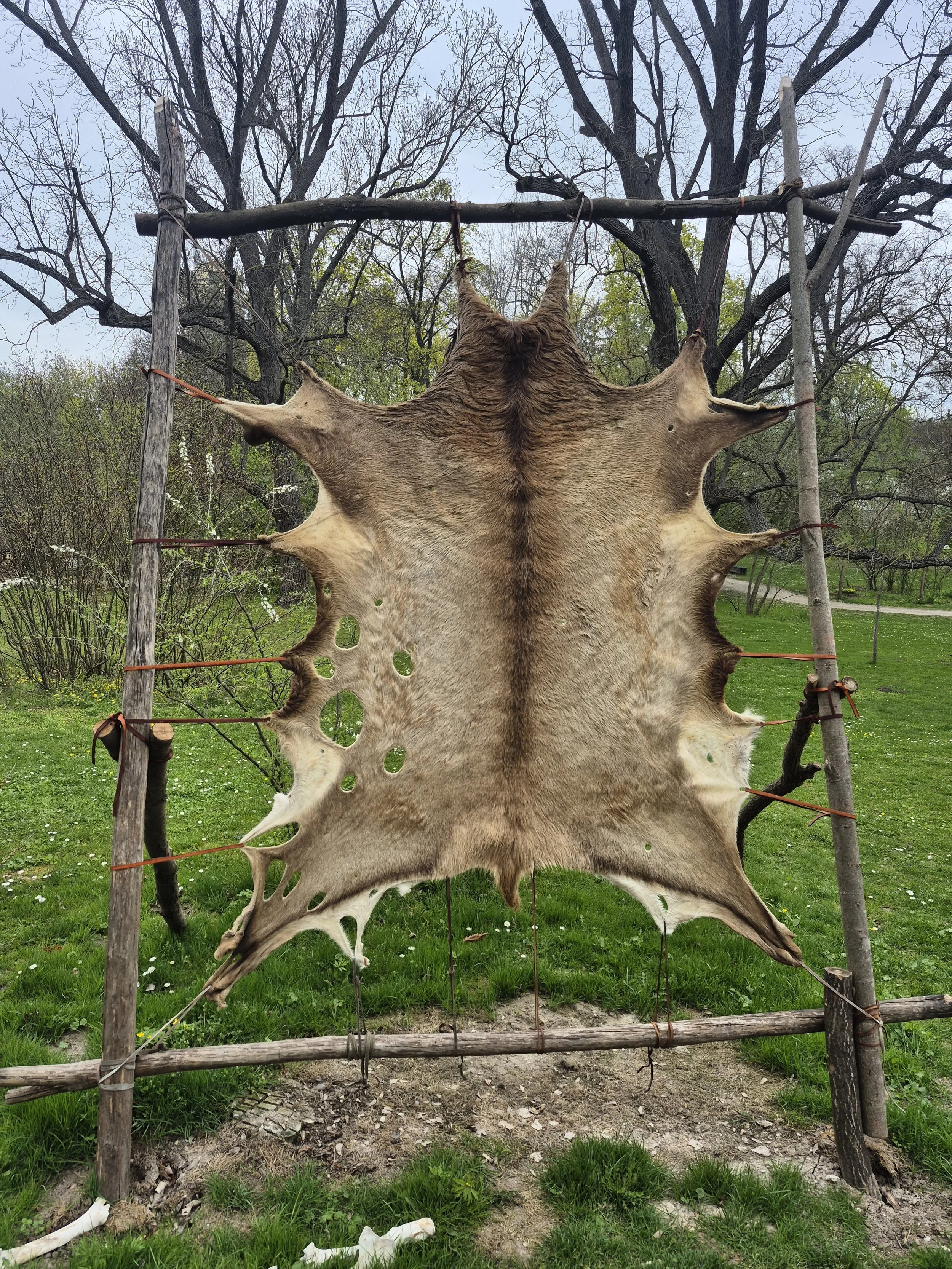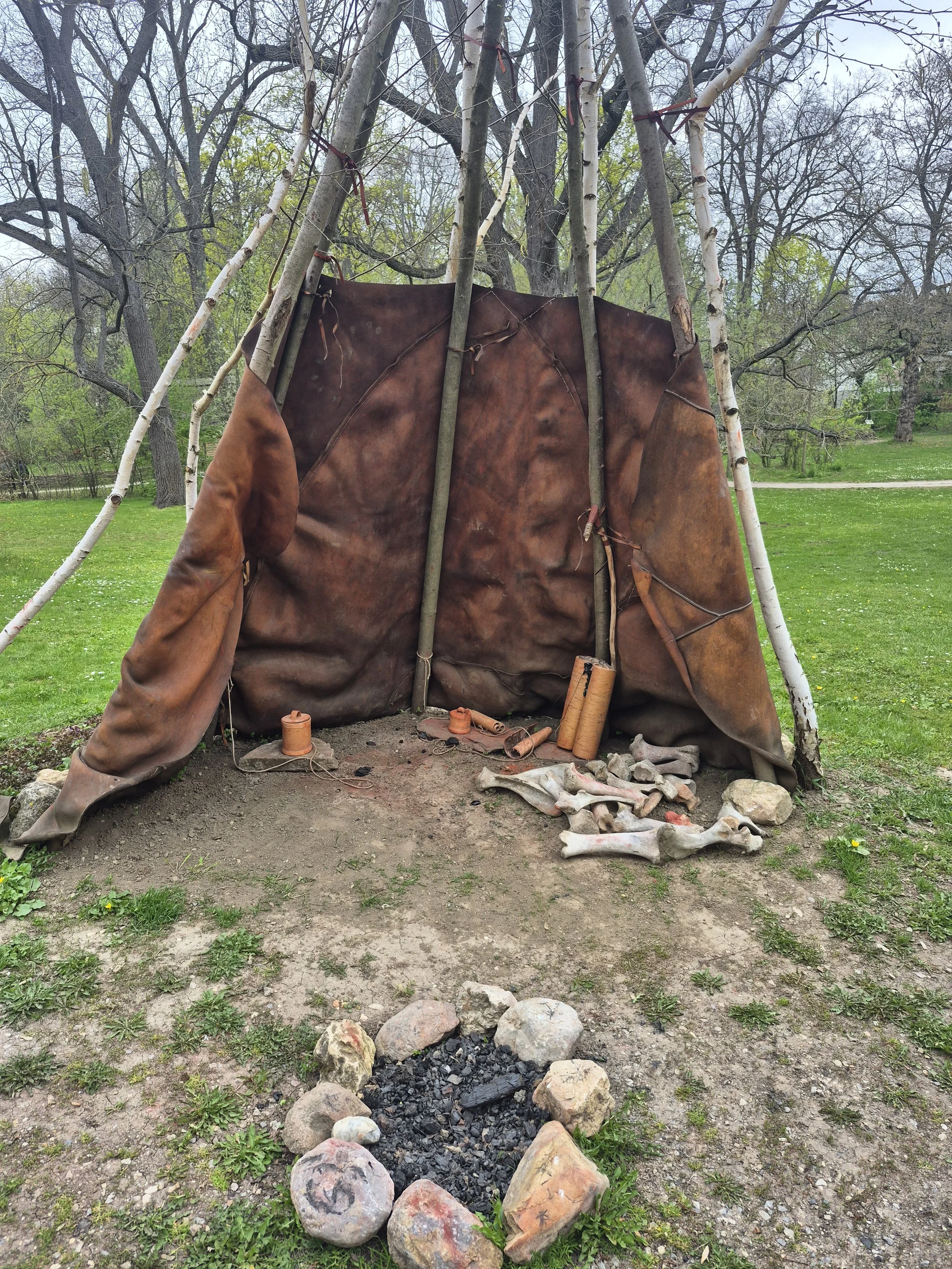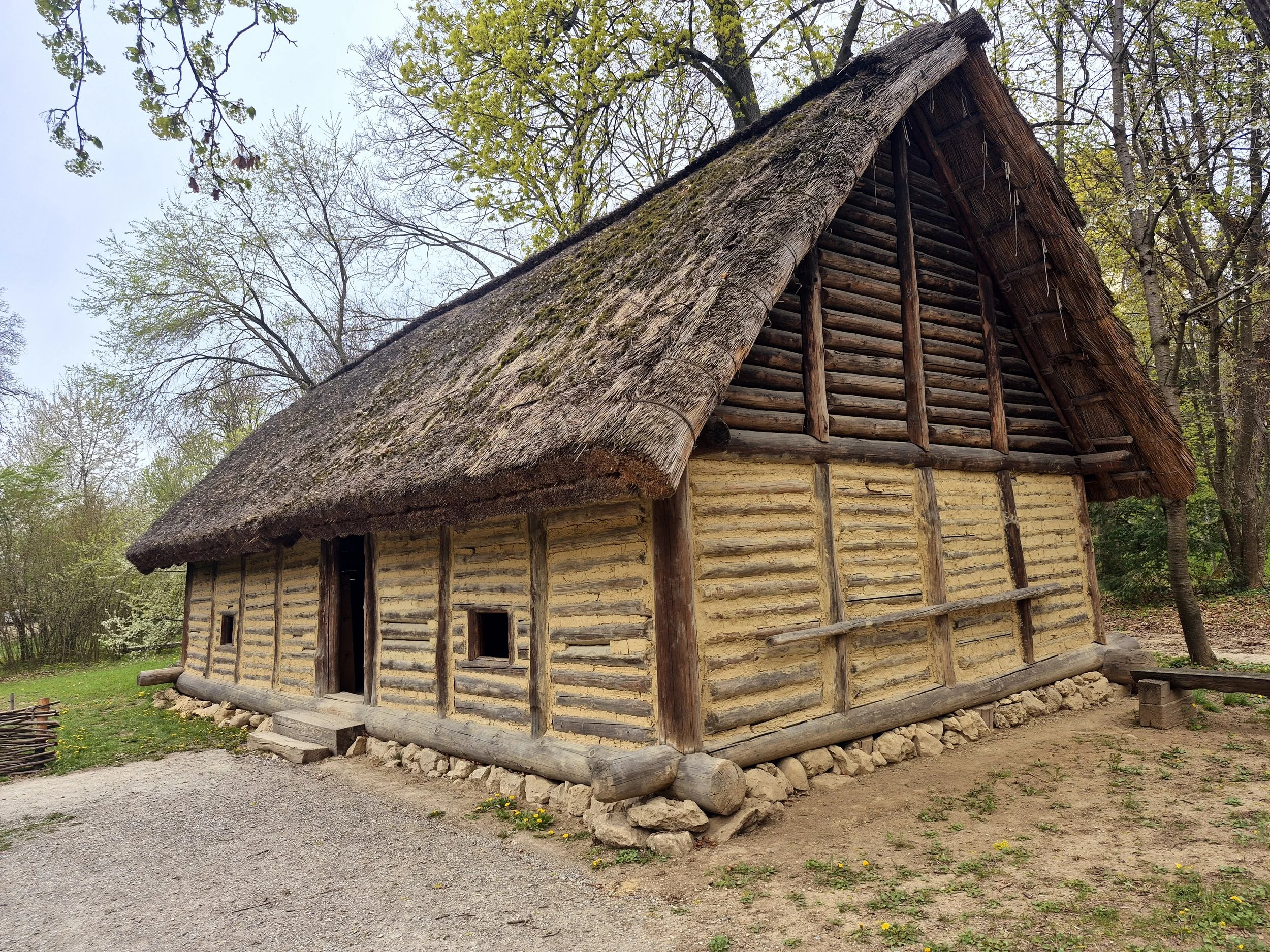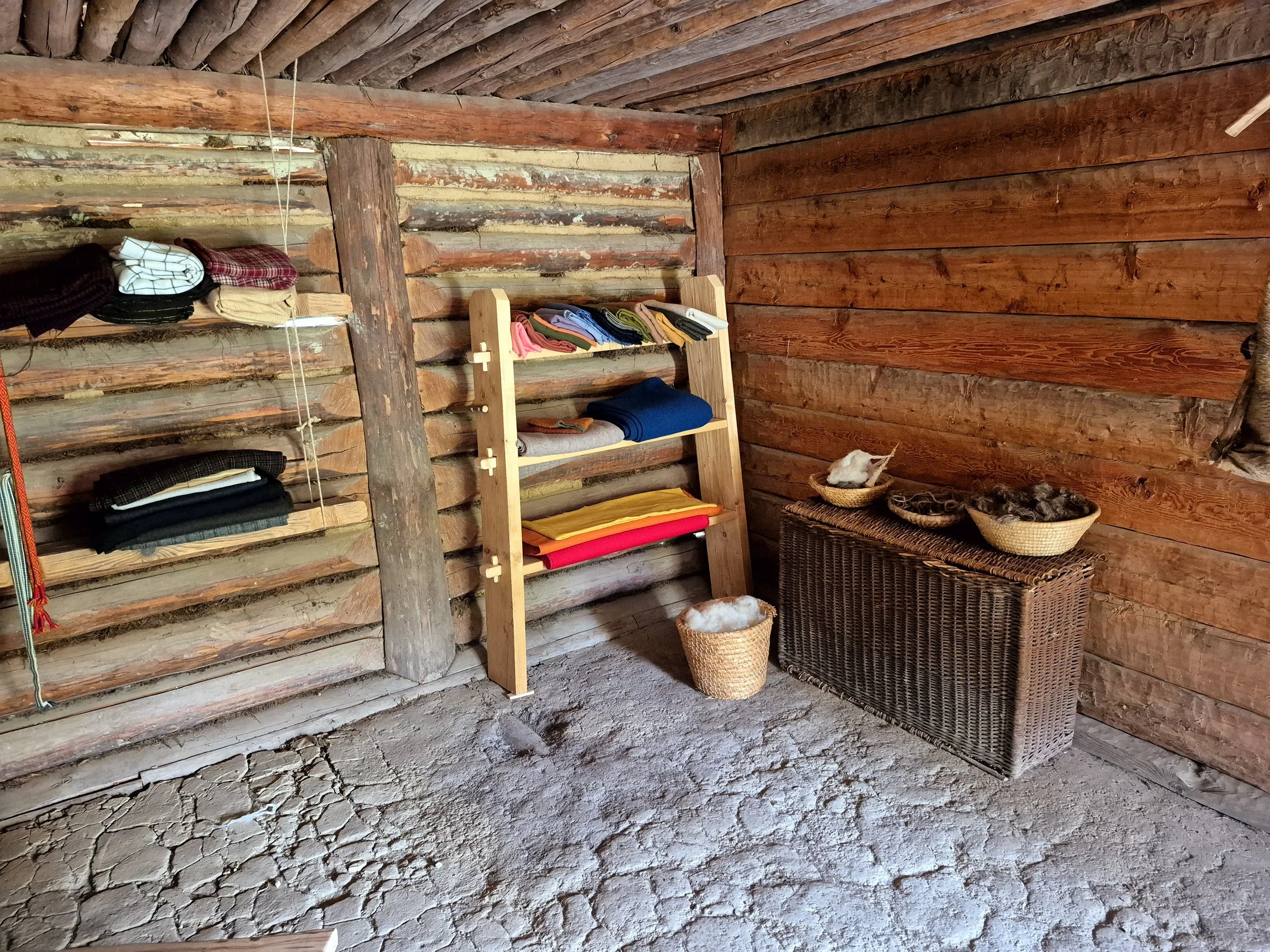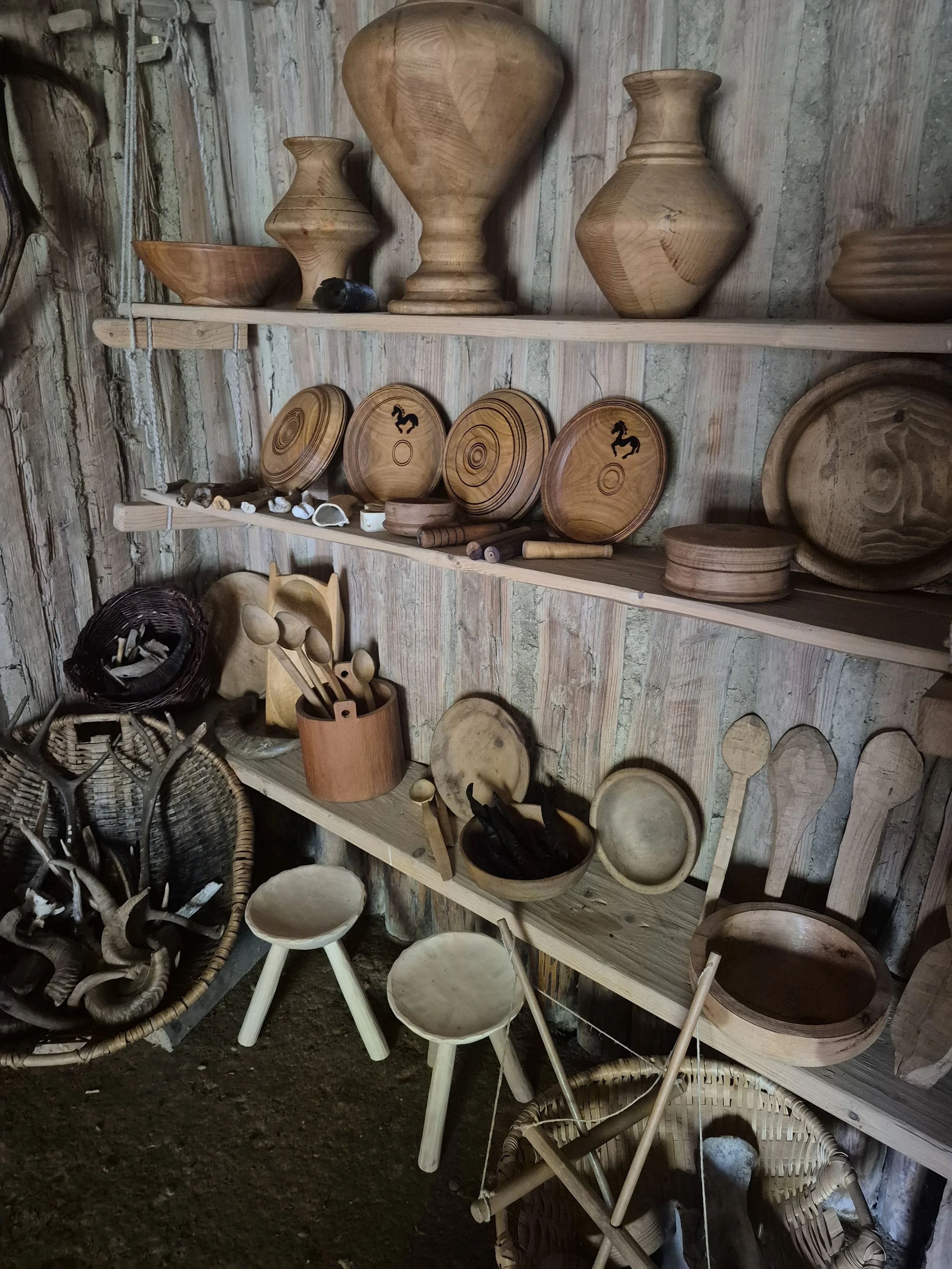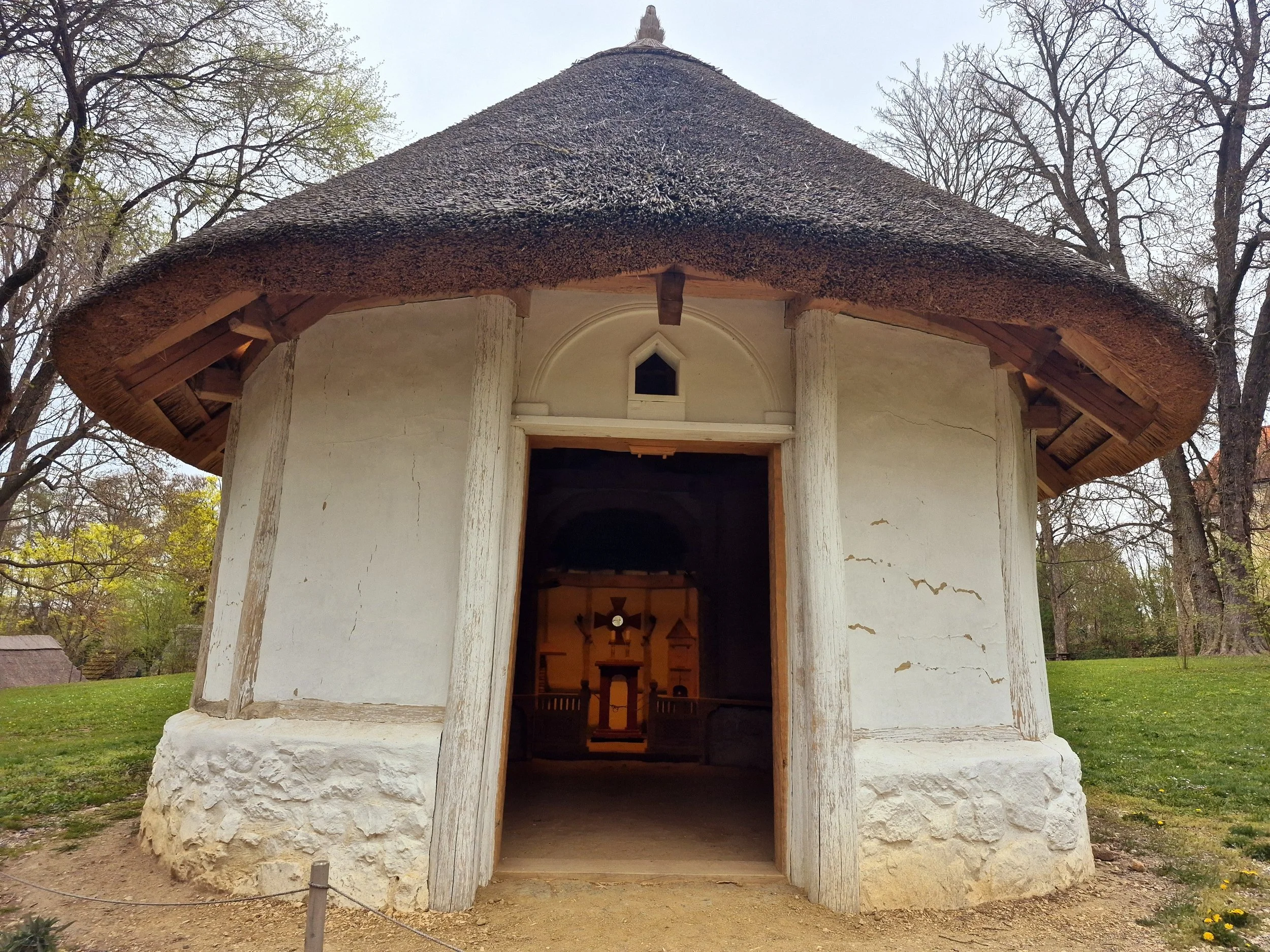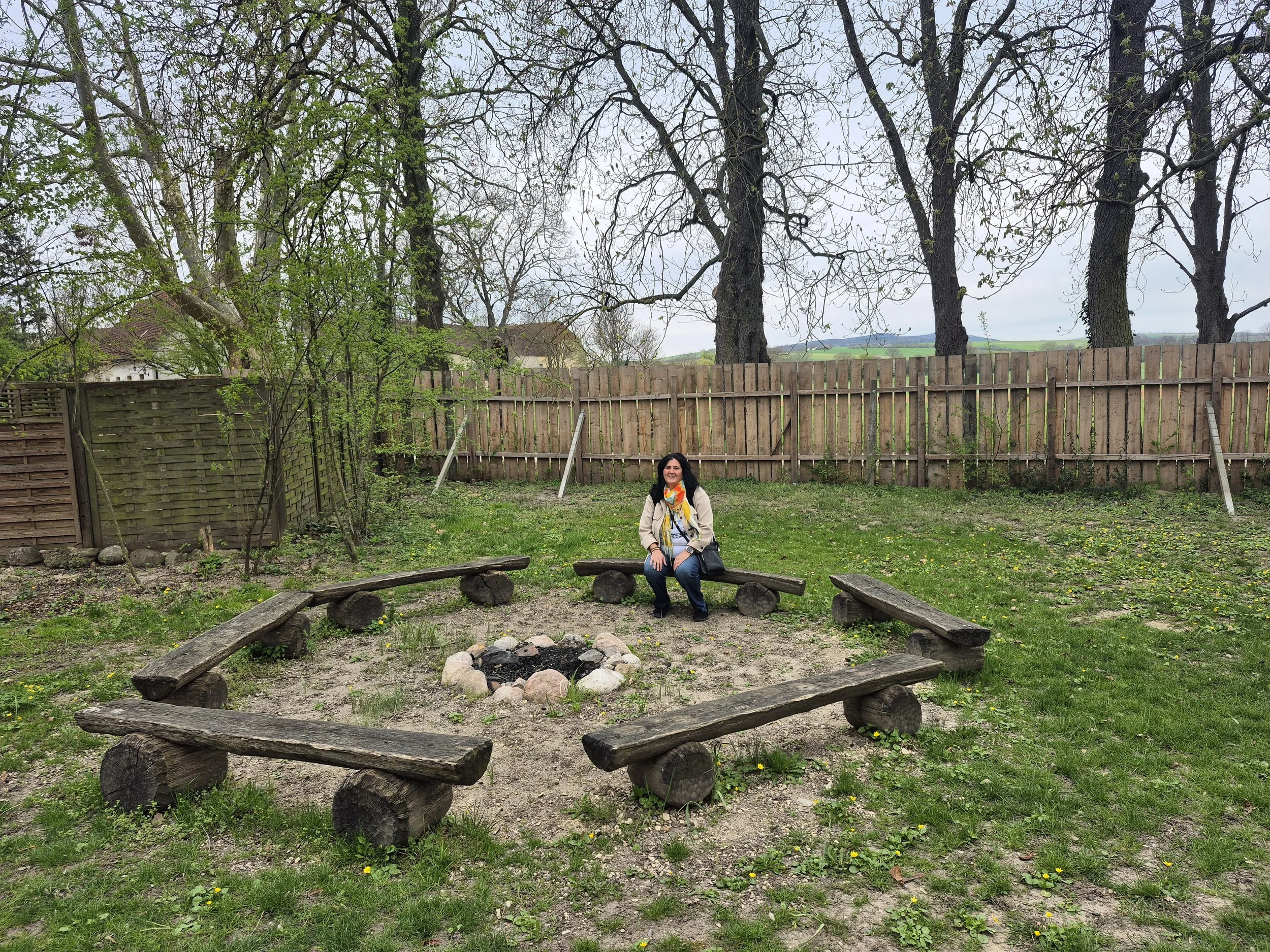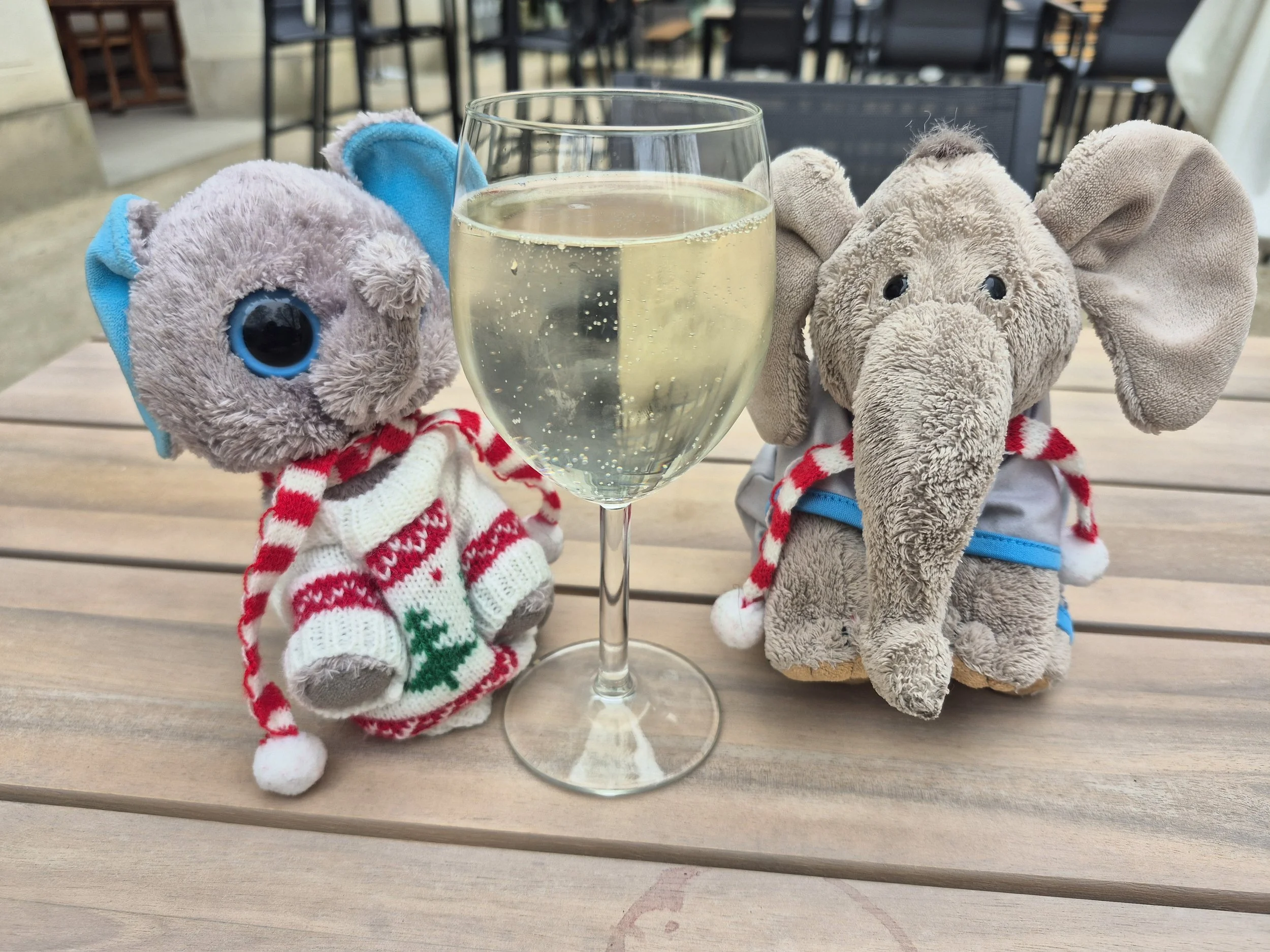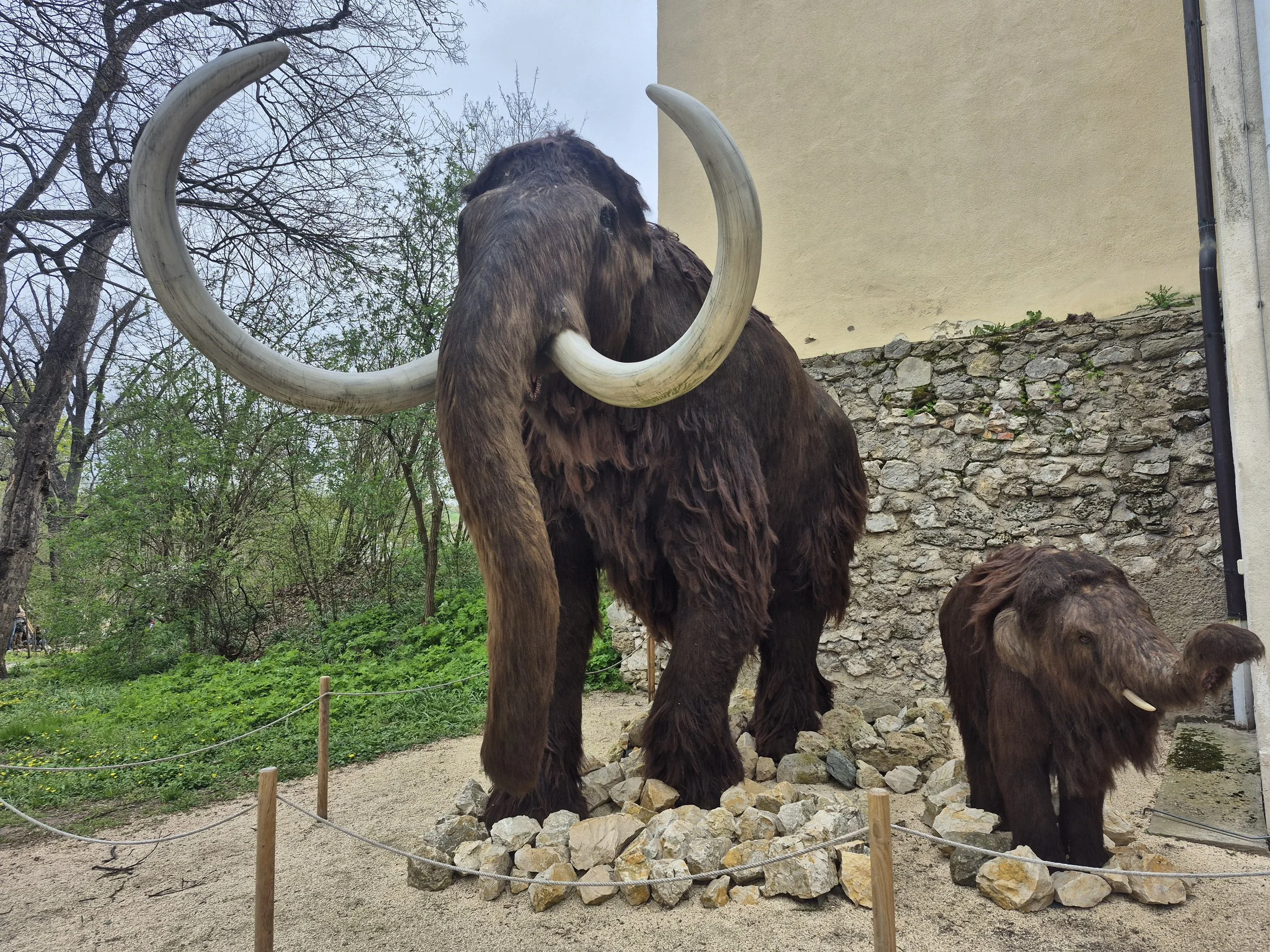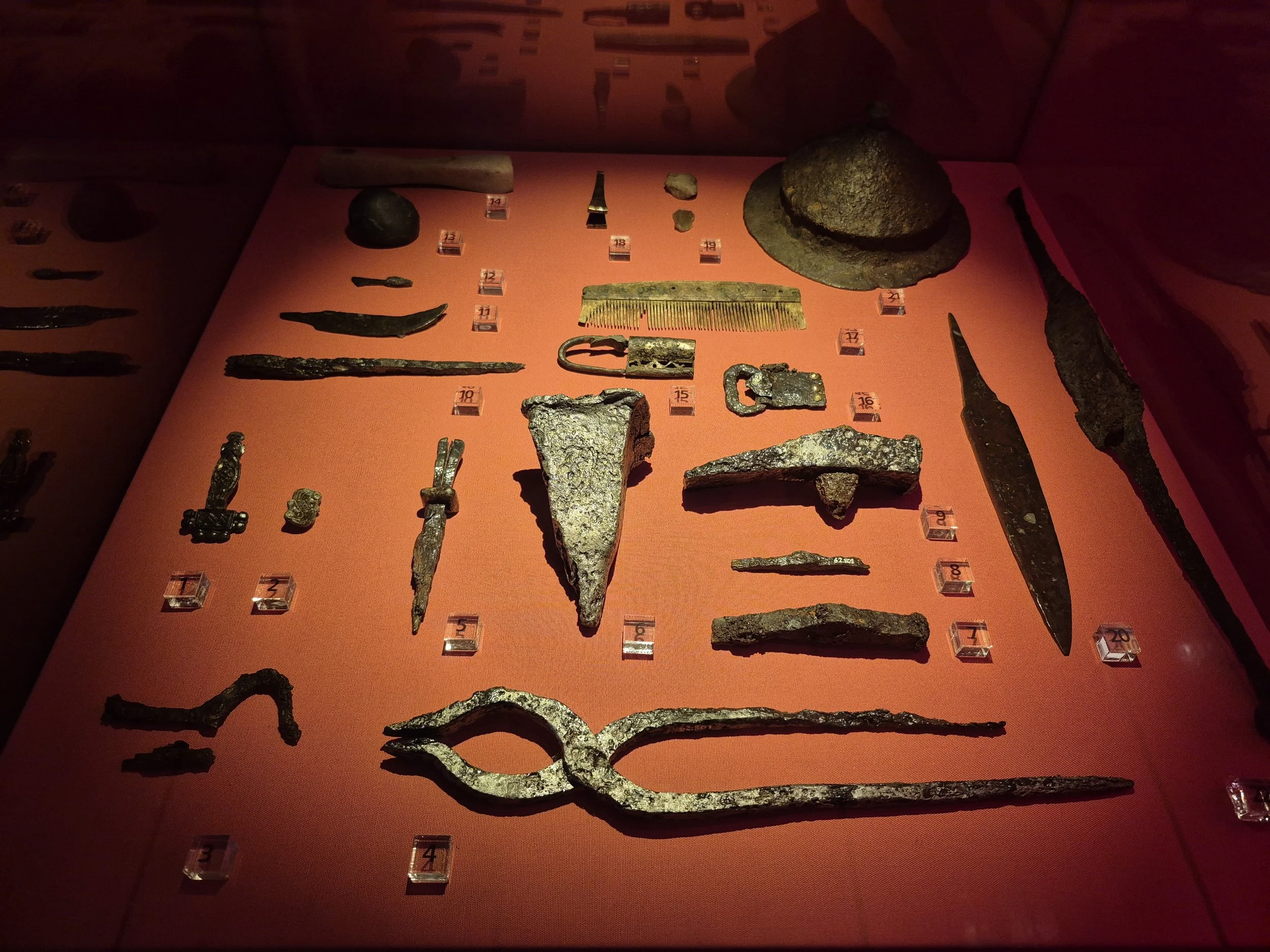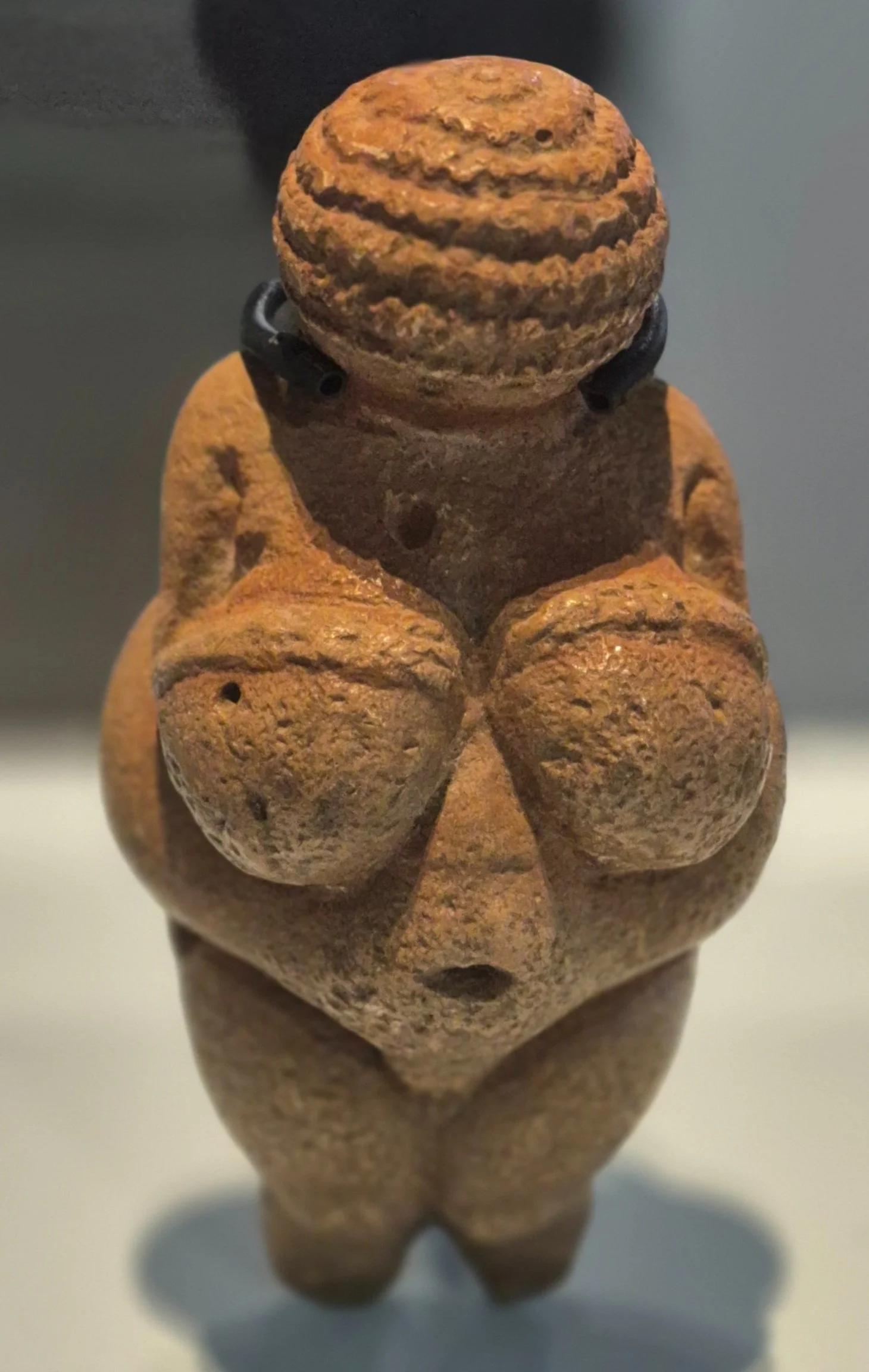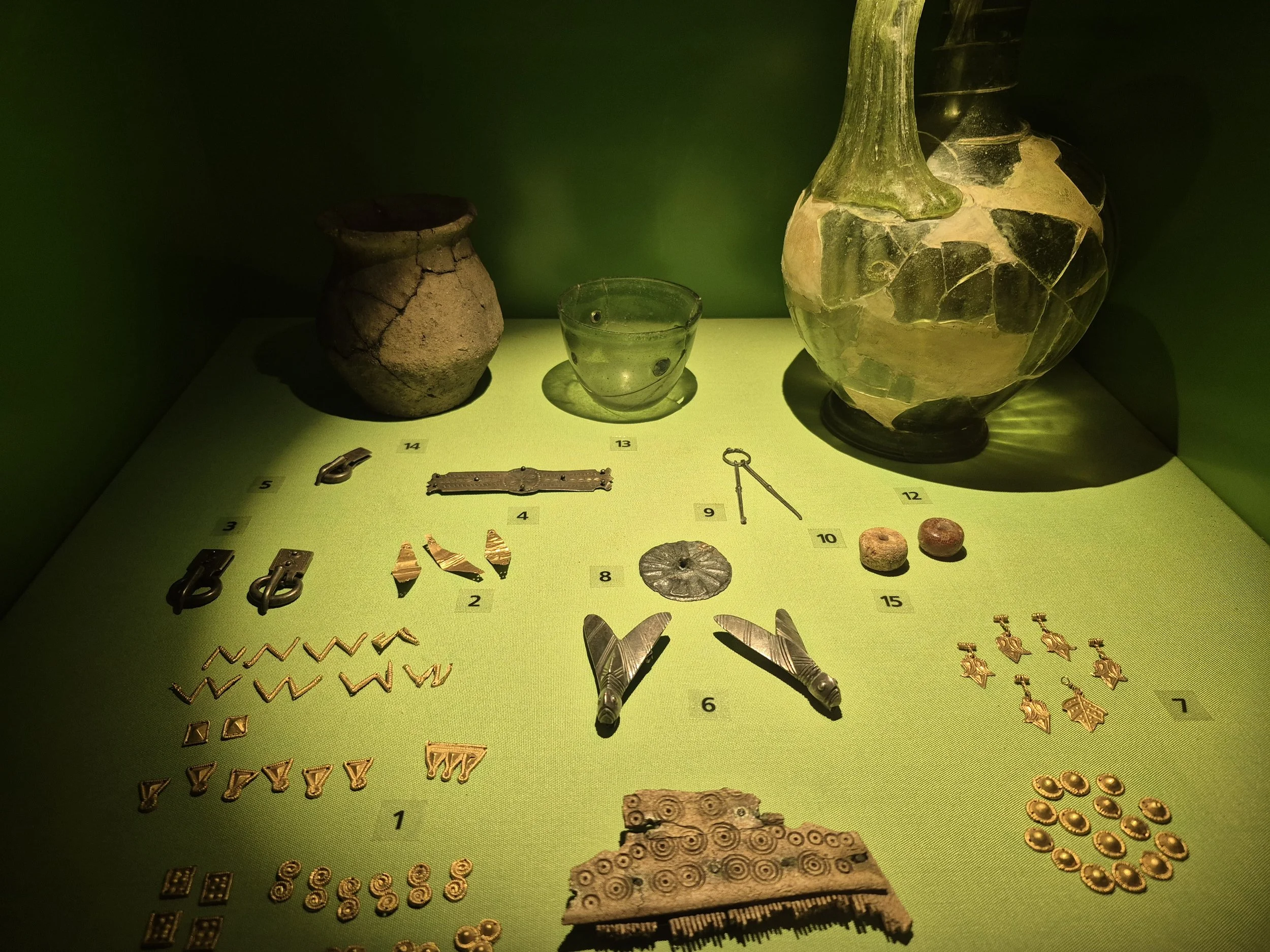Prehistoric Museum Asparn/Zaya
As a child, I visited the Prehistoric Museum in Asparn for the first time – officially MAMUZ Castle Asparn/Zaya – which had already been opened in the 1970s. Later, I also went there once with my son when he was still a toddler.
Now, many years later, it was time again. We arrived at the museum late in the morning and first visited the spacious open-air area behind the castle.
A Journey Through the Epochs
There you can embark on a journey through the history of settlement of the region. Numerous buildings have been reconstructed in an authentic manner based on archaeological finds and excavations. In addition, you get a good impression of the crafts and everyday life of the people from these epochs.
The Paleolithic
The tour begins chronologically in the Paleolithic.
There, you can visit a typical tent from that time, see a fire pit, and various furs that were used as clothing.
It is fascinating how little the people back then needed to get by.
The Neolithic
In the Neolithic area, there is a longhouse where presumably up to 15 people lived together. Behind the house is a grain field, where grain is grown in an authentic manner today .
You can also see a bread-baking hut. On some days, bread is even baked there.
The longhouse is divided inside into different areas, similar to our rooms today.
While some rooms were used for craftwork, others were intended for living and sleeping.
The Bronze Age
The Bronze Age is represented by two very interesting houses and a bronze foundry.
Next to it, there are plants that actually already existed back then. Here you can sense that the people were already settled at this time.
Everything is built more solidly than before; there are pieces of furniture – they made themselves comfortable.
The Iron Age
In the Iron Age, the different areas of life were more clearly separated.
We saw a smithy, a bread-baking hut, and houses.
A Celtic sanctuary shows that religion played an important role in the Iron Age.
The Early Middle Ages
The last represented area is the Early Middle Ages. At its center is a beautiful chapel – Christianity was already widespread at that time.
Several simple wooden buildings also characterize this epoch.
In addition, this section contains a fire pit with tree trunks around it serving as seats. You can sit down there comfortably.
For those who prefer something even more comfortable, the café at the rear entrance to the castle is certainly a better choice.
There you can also see two life-sized mammoths, which delight not only children.
Museum Tour Through Human History
After a short break at the café and a small snack, we visited the museum inside the castle.
On three floors, you can see numerous excavation pieces from 40,000 years, giving an exciting insight into everyday life, craft, and culture of long-gone times.
3rd Floor: Stone Age
The tour begins on the 3rd floor with the Stone Age, where many exciting tools, weapons, and even a bone flute are exhibited.
Information panels teach a lot about the people of these epochs, who were initially hunters and gatherers but developed into settled farming communities over thousands of years.
2nd Floor: Metal Ages
Next is the Bronze and Iron Age.
Again, the visitor sees numerous objects from this time.
The production and processing of bronze and iron play a major role here. The discovery of metals fundamentally changed humanity.
1st Floor: Ages of Writing
Here you can visit exhibits from the ages of writing. Right in the first room, this is impressively illustrated by numerous oversized books.
The exhibition on this floor is dedicated to the influence of writing on people and their cultural development.
On all three floors, there are also interactive stations that illustrate these long-gone epochs not only to children.
At the end of the visit, of course, a stop in the souvenir shop on the ground floor was a must.
There you find interesting books on various epochs of history as well as all kinds of souvenirs. I bought a leather bracelet.
